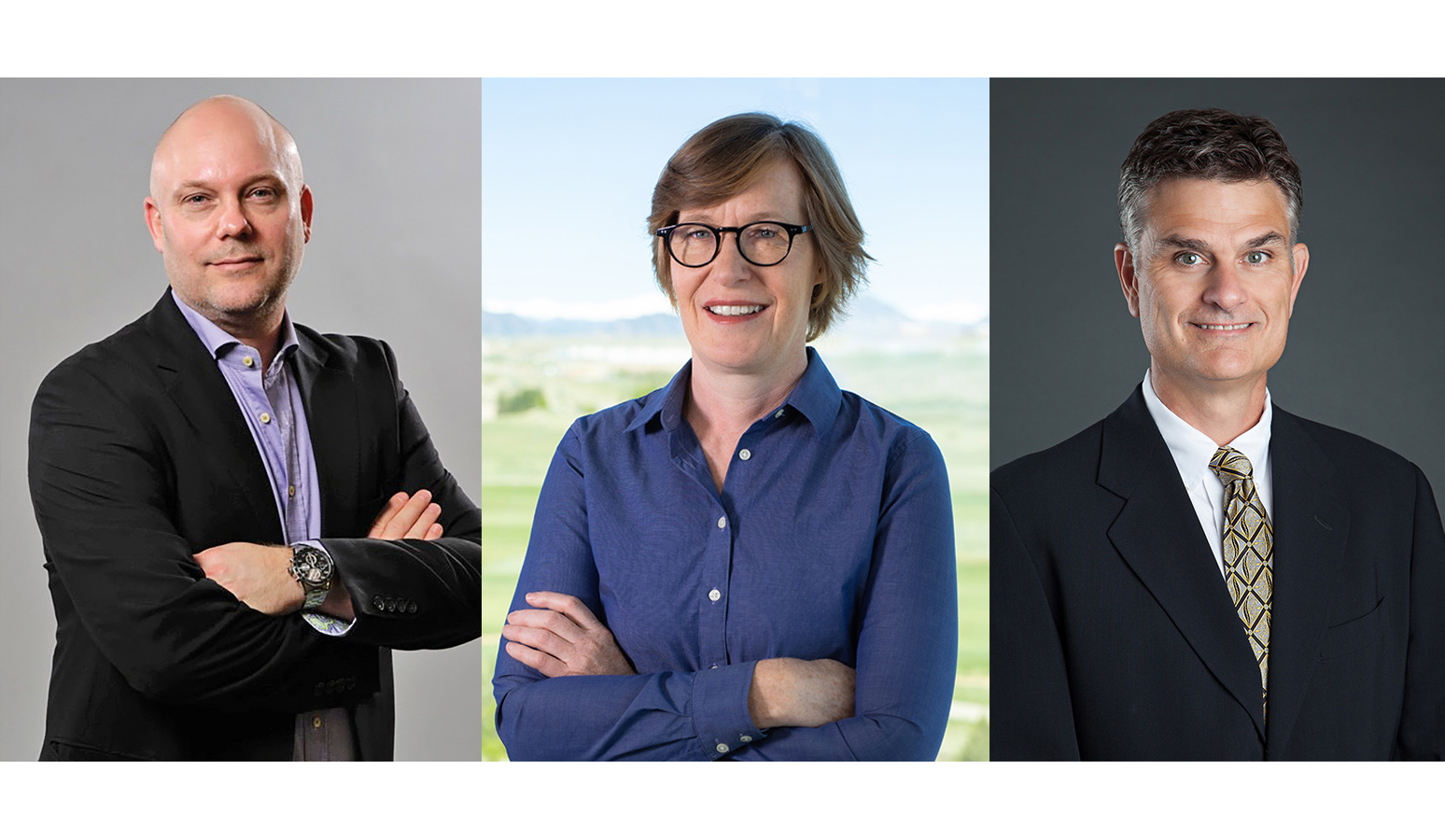
World Highways has brought together three key opinion leaders from the world of connected construction & machine control technology to discuss a series of hot topics. They are:
Magnus Thibblin
As President, Machine Control, at Hexagon's Geosystems division, Magnus is responsible for developing and driving strategy. He joined the company in 2006 and has held various leadership positions within Leica Geosystems, part of Hexagon’s Heavy Construction group. Having successfully led business and dealer development for the group, Magnus then built up the company’s Heavy Construction Industry presence in North America. He trained as a surveyor with one of Scandinavia’s biggest contractors, NCC AB in Sweden.
Elwyn McLachlan
Elwyn McLachlan is Vice President of Civil Solutions at Trimble, responsible for global product development and strategy. In this role, Elwyn heads up Trimble’s technology solutions business for the civil construction sector. This includes Trimble’s hardware and software platforms for machine control and construction surveying, as well as the group’s software offerings for civil design and engineering and construction site management.
Murray Lodge
Murray is Senior Vice President and General Manager of Construction for the Topcon Positioning Group, responsible for managing the global distribution for all machine control products through both the aftermarket and OEM channels. He works directly with the engineering department defining and developing new products for the construction market. Murray has been with the Topcon organisation since 1987, serving in various sales and product development leadership positions. He is a graduate of Oregon State University with degrees in construction engineering management and business finance.
To watch the full roundtable video, please scroll to the end of this article.
Q:How can technology help the construction industry cope with a global skilled labour shortage?
Magnus: Solutions today are already helping, but we need to simplify the usage of the autonomous steps. It comes down to workflow. To say ‘simple’ does not mean ‘easy’. To make something simple and work easily is normally quite hard but that’s all part of the process. We need to work more with the cloud to connect everything, making sure we get more connection between different people onsite. Collaborating more with customers and OEMs will be something to also think about.
Murray: There is a definite shortage of people coming into the construction industry. The profile is ageing, and as people retire, the younger generation is not getting into construction. It’s not considered cool. They’re looking for high tech, or they consider the construction industry as low skill, low pay. But it’s the opposite. If you look at technology in the industry today - we’re using satellites that are 12,000 miles up in the air, able to control a large piece of equipment down to an inch. It’s much more like rocket science – and it’s cool.
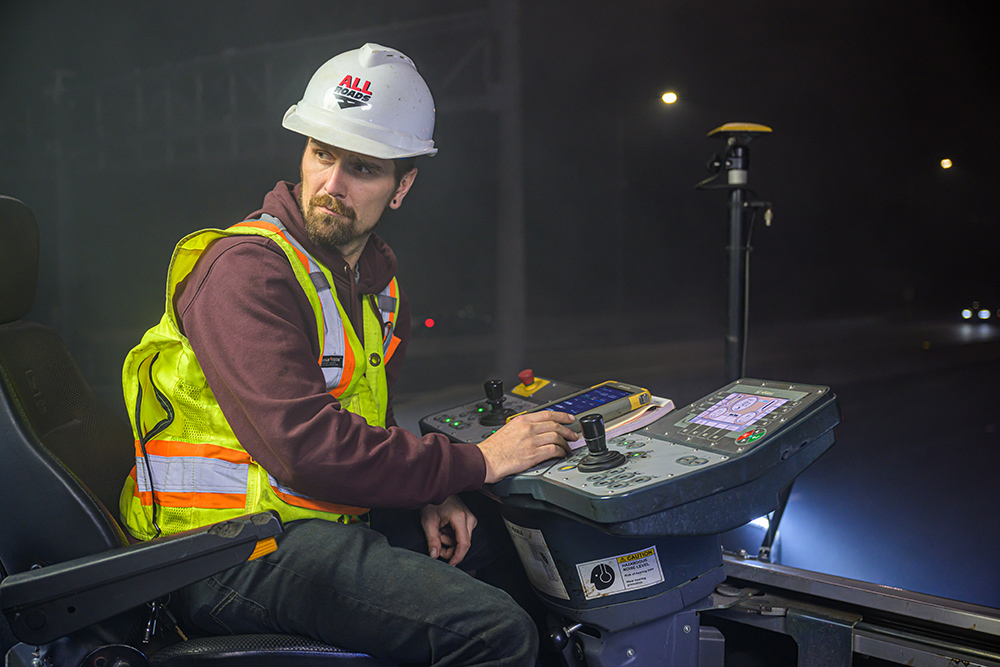
We need to educate the younger generation. We offer what the younger generation really likes to use. We have the ability to put an inexperienced person in a machine, and in a matter of months they can be as skilled as someone who has been running that machine for 10 years. It takes away the hesitation or the fear of using the equipment. If we can take someone with no experience who can go out on behalf of a contractor with a computer, walk around a job site and do layout and collect points quickly – and the contractor can have one person doing that instead of three – then that really helps get the job done with fewer people.
Elwyn: I would like to talk about our recent productivity study. Given the skills shortage, how do we help construction companies become more efficient with the workers they have? Our study took 16 operators with a range of skill levels. We set them the task of digging a 15m-long trench, 1m wide, 0.5m deep, to an accuracy of 3cm. Some had machine control technology, some didn’t.
It was a great study because it clearly showed the advantages in productivity and efficiency of using machine control. We saw a 43% increase across the board and for the novice operators that didn’t have this experience, we saw a 50% time improvement using machine control.
That’s a powerful example of how technology can help address the skills shortage – by getting people up to speed faster and making them more productive.
Q:Is that the answer to filling in those gaps?
Elwyn: It’s certainly part of the answer. It’s about making the industry more attractive - making it appealing to those at entry level, the early-stage-career folks who are looking at options available to them. The technology is sexier. It makes it less about being in the dirt and more like a computer game. I see people’s eyes light up when they get in an excavator cab and find the unexpected. They expect old-school dirty levers and knobs, and instead they see computer screens which look a lot like video games. I think that’s really making a difference.
Q:How do you think the pandemic has changed attitudes towards digital solutions? It led to a whole change in workplace attitudes. Do you think it’s created new opportunities for your solutions?
Murray: Yes. Suddenly, people couldn’t go to work, and it was all remote. Fortunately, we had [Microsoft] Teams and Zoom. We had real connectivities that allowed people to keep doing their business. Without it, who knows where we would be today? Previously, you had contractors or business people who thought they were not technically savvy and yet they realised, once they started using these, how their business could keep working. That took away some of the fear of technology.
They realised that connectivity was not only useful for meetings but allowed them to connect in real time and, suddenly, they can see what is going on in their job. They can find out how it’s progressing. Are they staying on schedule? If there are machines that aren’t working, how do they fix those machines remotely? It starts to sink in that, ‘hey, there is more we can do with this when we are not directly on the job’.
One company president we worked with said: “Anytime I go out to a job, productivity increases by 50%.” But he also said: “When I’m gone, it’s not there. But now, having the ability to be remotely connected all the time and to see what’s going on, people would stay engaged. You could see that the progress was keeping on track, and if it’s not, how we could fix it much quicker.”
The pandemic speeded up things as far as people’s willingness to branch out from traditional ways is concerned. They said: “Okay, we have got to do it differently because I can’t get on jobs, I can’t get people to go out to the job.” Technology allowed them to do that. The pandemic has changed it in a short amount of time and will continue to take people in that direction.
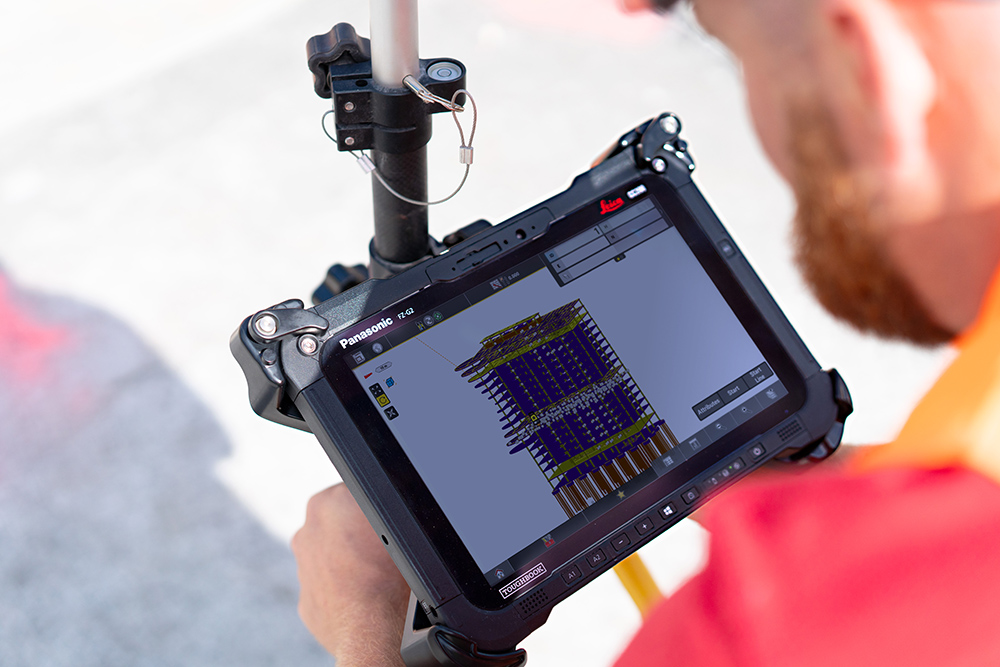
Elwyn: We have seen a step-function change in the adoption of our kind of connectivity solutions since the pandemic. This is very exciting. We’ve been touting the benefits of remote connection to machines for years, and the industry has been slow to adopt. When I visit customers, they are so busy. Construction is such a high-pace, frenetic industry that introducing new solutions takes a long time because they just don’t have the time to learn the tools and get their heads around implementing them successfully.
The pandemic has shown we have a choice. We all had to find new ways of working to keep productive and just to keep working. The great benefit of that, and I mean ‘us, the industry’, not just Trimble, is that people are now saying: “These connectivity solutions that Trimble’s been telling us about for years can really help here”. We can see that things like remote assistance, and the ability to remotely push the files out to the machine, really took a step-function increase in adoption during the pandemic.
That’s great because it’s also a great productivity improvement, generally. In the old days, you had a data manager driving out to site to troubleshoot an issue with a machine, or to update files on a machine…. well, when I would hear stories of folks doing that, it would make my heart sink. What a waste of time sitting in that truck for hours, driving out to the site to look at those problems, when you can do all that from the office.
I shouldn’t say “the great thing about the pandemic”, but we really have seen a significant increase in the adoption of those kinds of technologies since. The construction companies who have engaged are really seeing the benefits now. The ability to scale the operation, support operators from the back office, dialling into machines and seeing what’s on the displays and working through problems, is hugely beneficial and has made a big difference.
Magnus: It is 100% clear that adoption has accelerated fast. It’s interesting to look at this from the connection gains. We have a similar tool to the rest of you, but our Leica ConX solution with view-track sync has been on the market since around 2009. Suddenly, when this happened, we started to see an increase in adoption that was out of this world.
Let’s think about the safety perspective. You’re not close to machines, but you make sure they still work. They are completely connected to whoever is onsite and needs the information, but no one needs to be at risk.
This has accelerated the development of our safety awareness portfolio. Safety is one of the key enablers of autonomy. Every tool that we offer in this digital journey has been developed very fast during this time.
Murray: As far as the younger generation was concerned, they picked right up on it because when it gets to using technology and anything digital, there is no fear for them. Once they started using it, construction companies said: “Oh wow, they’re using it. Look what they’re doing.” And then, within a year or two, others started to gravitate towards it and accept it. Some people who hadn’t used it before were afraid to get started but once it was in a company, it just spread quickly. The younger generation certainly helped that.
Q:Let’s go from safety to sustainability – a key driver. What ways can the technology – your technology - help the industry reduce materials and supply chain costs?
Elwyn: I want to talk about fuel usage and carbon emissions. Trimble is making significant investments in autonomy, and some of what we are seeing – the connection – is really phenomenal in the reduction of fuel usage and associated greenhouse gas emissions through the application of autonomy, or rather through the autonomous operation of machines.
We did a study recently, looking at the improvements with pass-to-pass counts, and overlap is the key thing. Overlap in the passes with an autonomous compactor saw a 25% improvement, or I should say a 25% reduction in greenhouse gas emissions through using an autonomous compactor on site.
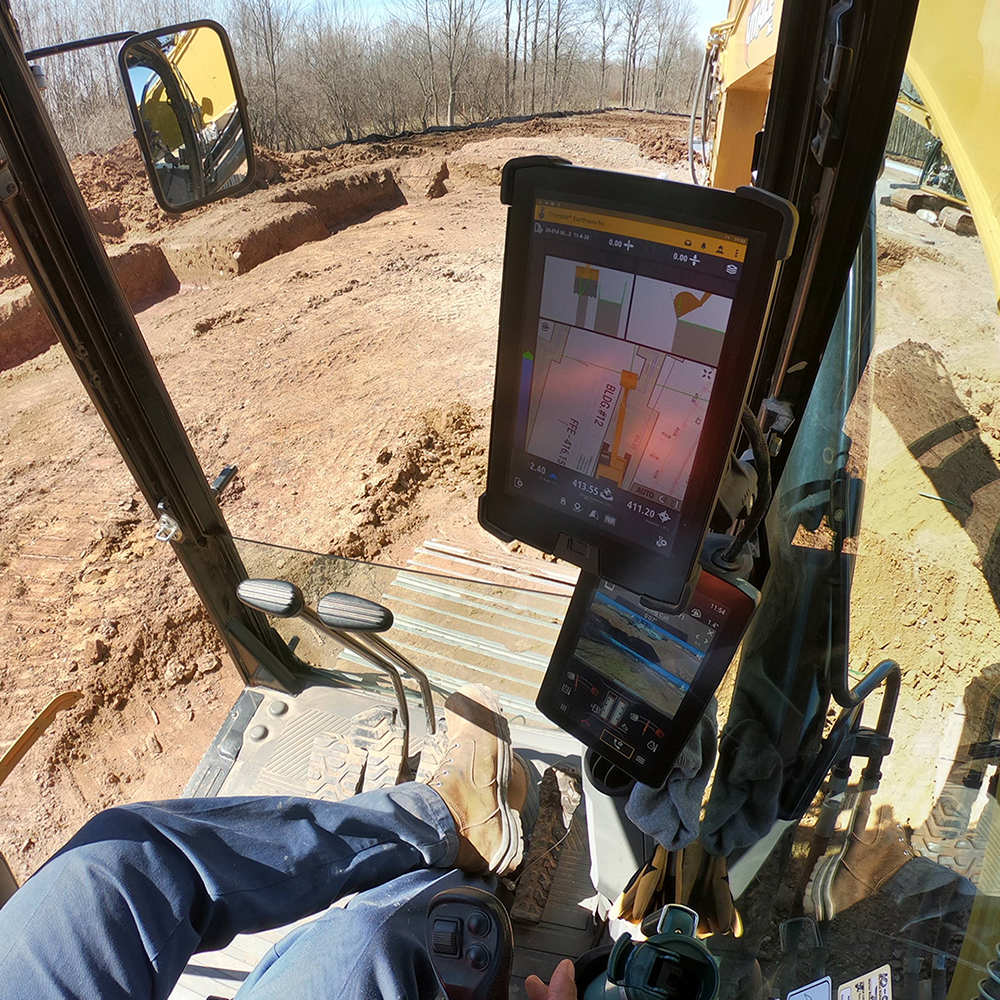
25% is pretty phenomenal. That’s a big improvement. We are really excited about how autonomous machines can have a meaningful impact on sustainability, on greenhouse gas reductions. And, of course, materials usage is another real industry opportunity. We see that the statistics on materials wastage in the industry are horrifying, and clearly, we have an opportunity to make a difference in the industry, and in the world.
Obviously, tracking of materials onsite is a key initiative. How you deploy and lay down those materials and track that material lay-down to minimise the wastage of materials is a focus area for us.
Magnus: When you’re not bulking the right material out, you might have to fill in with more expensive material. It starts to be wasteful and also increases the cost of material. The logic is to use the same model across the site, use the technical spec properly, and then you will start to actually save. This is the first step of sustainability.
There are a lot of initiatives from all of us going in the same direction. But we should start to use the systems to their full potential today, and then we will get a lot of waste off, and follow the spec as well, so quality will increase simultaneously.
Q:What are your thoughts about reducing carbon-fuel consumption?
Murray: As far as sustainability goes, the sooner you start implementing technology in a project, the more impact you can have. If, at the beginning of the design phase, the engineer uses technology to balance the site so you’re limiting the amount of cut that needs to be exported, or the amount of import that needs to come in, that’s a lot less trucking. A lot less carbon is used, and the carbon footprint greatly diminished.
Next, where the contractor is moving material from the jobsite and using software available today, they can plan routes and minimise haul routes, making sure they move that material only once. That is much more efficient. It’s producing a lot less carbon because it’s minimising the amount of equipment utilised and the amount of time it’s running onsite.
When you hit grade, you stop. You don’t continue to make passes. It’s about being as efficient on the job as you can and maximising machine productivity.
If you look at the paving industry, it’s had automation for 70-plus years but they’ve been doing it the same way. If you look at resurfacing, there are four million miles of paved roads, just in the US. And you get roads deteriorating and we want to fix the road. Well, nobody wants to really analyse the road condition because that means closing the road and surveying it.
So, they do this kind of mill and fill. You take a certain number of inches off, a certain thickness off. But when you just mill a thickness, the road is really the same, it’s just that many inches lower. Then they come in with a paver and try to smooth it out.
You’ve just made it look good. You’ve smoothed it out a little bit, but in three years you’re back doing the same thing. Technology is available to scan in real time to get an accurate representation of the existing road. Using software, the mill will then do variable depth. Instead of milling three inches everywhere, it will mill three inches in certain spots and five inches in the high spots and maybe an inch and a half in the low spots.
The road will look as smooth as a table top and the exact amount of material will have been used. The road will last longer, be safer and we will have used the least amount of material necessary. Counties, states and cities will have finished roads that will last longer, and they will have maximised their limited funds.
Q:What you are describing sounds like a dream. Have you got any examples of where this is actually happening?
Magnus: We are doing similar things. I think all of us are, with customers across the globe. Most of our customers are adopting and using technology and are improving everything in their workflows, and the way they use data. We see a lot of projects that are improving vastly from start to finish. I like the earlier discussion about bringing in everything from more or less the take-off in the beginning. Then you bring that all the way through the project until you have the final asset.
What is happening now, which is interesting, is that many of our customers are utilising technology faster and faster. That means the win we will see in all these projects worldwide will, of course, be a great win for all of us. For instance, the US has a ton of roads. I lived there for six years so I’ve been riding on a few of them and there is a lot of work that needs to be done to fix these roads!
If we used the right technology to improve the roads – and we have that technology today, it’s not something that doesn’t exist – we could make sure that we have the right approach to the cost. Right now, we are basically doing what Murray said. We’re just repeating the same mistake over and over again when we could actually fix this and have quality in road construction using technology that most of us already have.
Q:How does your technology help the construction industry cope with this increased pressure?
Magnus: The solutions we have from take-off all the way to paving can be used by all of our customers. The challenge is if you’re not using the technology today, you need to start now, unless it is too late. Some people believe the hurdle is too high. I believe the hurdle is too high if you never start.
You need to start, even if you start small. Then you start to use different machines that are connected. You build it in and work with those suppliers you believe are good to work with. You build and grow with them together. We are taking that line of attack, supporting customers and having a dialogue with them to start at different levels.
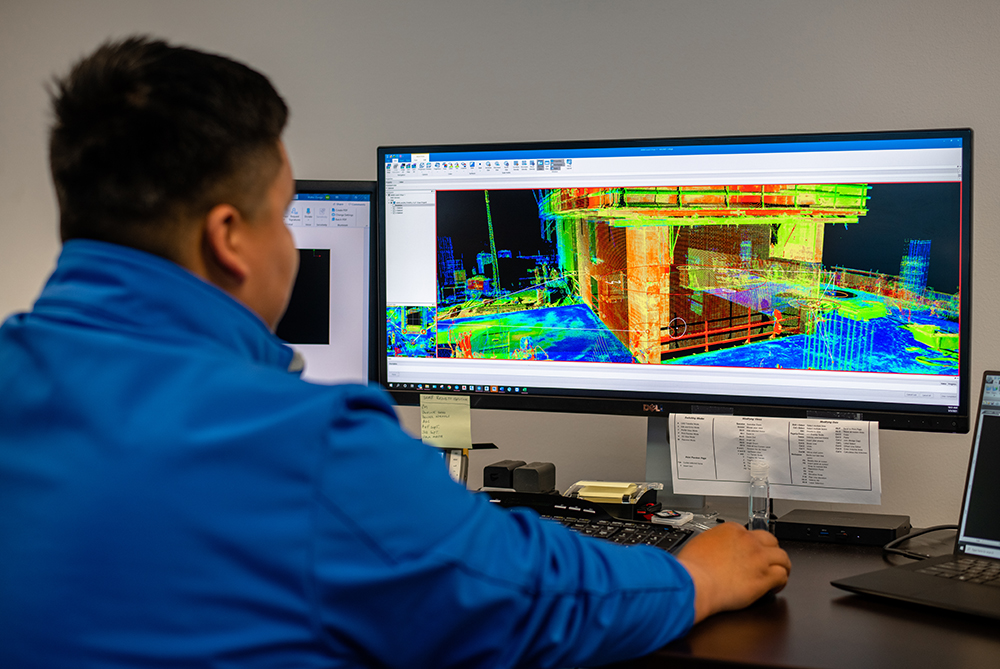
We don’t believe you should start with everything. You should start with what is comfortable and increase the digital part of your company. You go from there and build up, I would say, a more comprehensive digital transformation plan, depending on the customer or the company size. What can you bring into your workflows and how do you get the rest of the technology integrated as the next step?
You can’t just go all in. You have to assess where is the best value or the best win and how you can get the company to adopt new technology and workflows.
Murray: We have a saying here. You can’t manage what you can’t measure. That is very helpful but what actually happens is that you do the work and then you measure it afterwards. You figure out what you did right and what you did wrong. But it’s already happened. In this day and age, with the contractors and the timelines – they’re extremely tight – and the profit margins are paper thin. It’s ‘how do I fix things in real time?’
We’ve changed that model. You can’t manage in real time what you can’t measure in real time. Connectivity is helping contractors to have more control over their jobs.
You can’t bite off more than you can chew. You’ve got to focus on whatever part of your business you think is struggling, and that’s where you implement the technology first. Then you continue to add as you get more comfortable.
That is where we are, today. The pressures and the timelines are tight. We have different technologies that people can utilise, and it’s just a matter of getting companies comfortable to implement it.
Q:Elwyn, how does your company cope with increased pressure and in particular, with one of the biggest pressures - finances?
Elwyn: Construction companies generally run on thin margins. We read stories every day about construction companies going out of business because they got in a hole on a project. We’ve seen many examples of where just one project puts a company out of business.
We look at it not just from the technology onsite but going much further upstream in the process. We recently acquired B2W Software here in North America to help us connect together. What Murray said about being able to measure results onsite is so important. But how do you connect up that information with how you expected that project to run, what you planned for, what you budgeted for in that project?
We are looking at how we can help contractors, from that very early stage in the process, to identify which jobs to bid for, to bid for them correctly, to bid with the right kind of plan and margins, and then execute against that plan in line with that estimate, so that you’re closing the data loop out of what you plan and how you execute the job.
We see this exciting connection between all these devices out in the field - devices on machines, drones, rovers, total stations and scanners - collecting really rich information about what’s happening on the jobsite – what I call descriptive information – and being able to feed that back in and compare it to what was planned for the job, helping contractors make corrective actions in real time.
This is what Magnus was talking about - the faster we can get data back to the project manager, the site engineer or supervisor, to say: “Uh-oh, something is off here. This job is not running as we expected. The productivity is not as we expected.” How can you make corrective actions to bring that job back on track or change your plan in light of changed site conditions, or the weather, of course – the thing that none of us can control, the curse of all contractors.
Connecting data across the cycle is a powerful way to help contractors run their jobs more efficiently, but also their whole business. And not just that, but then to feed that data loop back to the next estimate. Based on what I learned from my execution of the last job, how do I plan and estimate the next job more effectively?
Q:You can plan and plan … but you don’t actually ever know what is going to happen on site, do you?
Elwyn: I find that really exciting. I think it was a great Chinese philosopher who said: “Your plan never survives first contact with the enemy.” That is true in life, right? We can plan, we make the best possible gain but the day the machine pulls up onsite, there are all sorts of unexpected things happening. Whether it’s things not being delivered on time, that cursed weather again, labour issues, machine downtime - we have to be able to adapt flexibly to what’s in front of us.
That’s one of the things I love about the construction industry – that kind of urgency. We have the best people in construction dealing with these changing conditions constantly who can react in the moment. What we want is to make those great people even better by giving them the data to react to, so it’s not just anecdotal.
I talk to contractors and say: “How do you get this done?” They say: “We have really experienced foremen,” or “We have really experienced site engineers.” Of course, having experienced people is a wonderful thing but how do you make even experienced people better? By giving them data to make decisions. The more we can serve those people with data, the more they can make the right plans and the right corrective actions to improve.
Q:Magnus, do you agree with Elwyn?
Magnus: Yes. We are all on the same journey which is a good thing. I come from the industry. I was out on construction sites a long time ago. You would be amazed how much has not changed during that time. A lot of things look the same.
It is changing though, faster and faster today, which I’m very happy about. I think we all are.

All of us have to keep in mind that everything we’re working on here is to make sure that increasing collaboration onsite is one of the key parts. The question we must ask is how we do this simply because we also have other parts that need to be integrated in the construction sites nowadays. You also have OEMs coming into this space, and we are connecting the machines.
It's not just about machines but also how we mix that into our fleet. They have their fleet management, and we need to see how we connect the entire fleet into our collaboration tools. We, technology providers, are some of the most important stakeholders in this to make sure that collaboration for the customers’ benefit becomes even better.
We are experts on the technology side and, of course, I would say we are becoming experts on the software side too, if not already. The next step is to get the entire ecosystem, or let’s say connected ecosystems, to connect. That is why I think we are not even halfway there yet.
Q:Magnus says that we’re not even halfway there. Does that depress you a little bit?
Murray: No. It gives me a really happy feeling because there is so much opportunity ahead. We’re halfway there in some of the more mature businesses but we’re in single digits in many of the other aspects of automation. It really bodes well for all our companies, for the whole industry. It’s all about taking that information and utilising it. You have history, you have experience but the more information you have, the more intelligence, the more real-time decisions you can make. That’s going to have a positive impact on your progress and your company profitability.
This means our future is that much brighter. Everything we can bring to market is going to increase that adoption, but we have a long way to go and that is good for our businesses.
Q:The future is looking brighter but the cost of running a huge construction equipment company is rising. How can your systems help to align equipment management costs with onsite management requirements?
Murray: It’s all about managing those machines and our people onsite so that we’re maximising utilisation. You’ve got telematic systems that have been around for years, and the OEMs have been putting their own systems on but adoption in a telematic space was really slow for years because it was manufacturer specific.
That has changed. Customers can have mixed fleets but can monitor different machines using one software package. They’re able to track everything that is happening onsite. And by that, I mean the machines. If a machine is sitting idle, they can see that. They can move it to another project where it is needed right now.
If machines are not running properly or if maintenance is needed, these things can be monitored. The facilities are there to track the equipment and make sure that it’s not running idle on a job and using expensive fuel.
How do you monitor the whole job, and the whole progress? On a paving job the crew is out there by itself. They can only work when they have mix to put down but that mix has to come from the plant on trucks, and often the crew doesn’t know where the trucks are.
By automating that whole process at the plant so information is in the cloud, the paver knows when the mix is ready. Once in the truck, it is tracked so the paving crew know when the mix is going to arrive.
The roller is tied to the paver so if you connect those you know what is going on. The connectivity between the plant, trucks and paver is seamless. The owners and the project foreman are also connected so technology can make these projects run as efficiently, effectively and as profitably as possible.
Elwyn: You need to get good use and efficiency from the machine. One piece of the puzzle is being able to track machine and operator productivity, making sure you have an optimal combination and are able to make corrective adjustments when it’s not going well.
As Murray said, the machine OEMs have been very active and have done a great job in tracking maintenance fault codes and maintenance requirements for machines. In reality, most contractors run a mixed fleet, but contractors can’t be connecting to five different portals to look at machine maintenance records or utilisation rates.
Increasingly, as technology providers, we need to bring that information to one place, into one portal, so the contractor has a single place to view machine status, maintenance schedules, utilisation rates etc., to enable them to make better decisions.
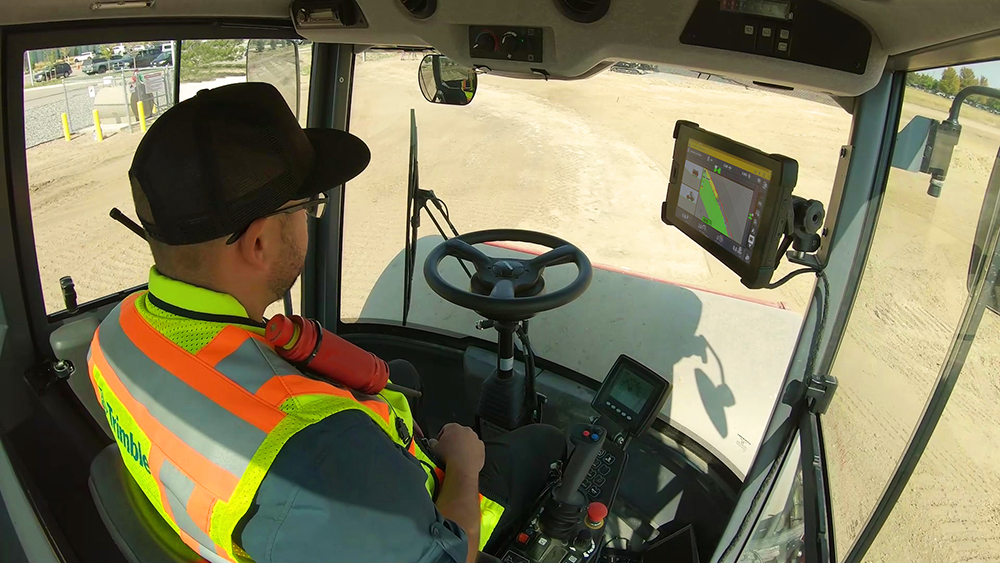
Proactive maintenance is important. There’s nothing more heart-wrenching than a machine going down on a job. We are helping contractors identify proactive maintenance, so it is scheduled in early in the process and isn’t disruptive.
Magnus: I think the data point is extremely important. We talk about data and produce millions of points on scanners etc. but what is key here is what data and where. It’s about the tangible data.
As Elwyn said, contractors generally run mixed fleets. We do have the ISO projects to make sure we are unifying this, whether it be data, format or localisation etc.
That should mean one place to get the data but that still isn’t enough. We need to get the right amount of data to the right person – the decision-maker. That is just one part. People talk about the data itself as the ‘new gold’. We need to look at how we utilise the right data in the right place and at the right time.
We are all trying to help contractors accurately account for their costs but, I’ll be honest, we don’t have all the answers. The key is to get all the data into one place and then you can build from that and see the savings. I cannot say we have all the pieces for all of the challenges that our customers have. Not yet.
Q:Any final thoughts?
Magnus: We’re on the right track. Customers are getting up to speed. Adoption is going faster. Data is finally used in a better way or at a higher rate. We need to make sure that it gets easier and simpler for our customers. We are also talking across industries.
With the technology we are building, we will be able to make the construction industry more sustainable and make sure that it increases its bottom line. I am very positive about the future.
Murray: I have been in the business for 35 years. I thought people would take on this technology and implement it right away, but it has taken forever. The pandemic has really helped. It’s that tipping point talked about earlier, where people now realise that we need to make changes. We need to keep it simple. One of the barriers to growth in the past was making things too complicated.
Elwyn: It’s never been a more exciting time to be in the construction industry. There is so much more that we can do to make it more productive, efficient, sustainable and safer. I see contractors really diving in and getting comfortable with technology solutions and pushing us.
Mining data and turning that data into intelligence so that sites are run more effectively is a huge opportunity and something we need to deliver on. Autonomy is also a huge industry opportunity.







